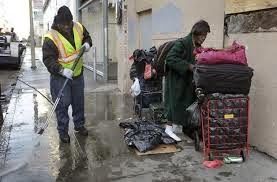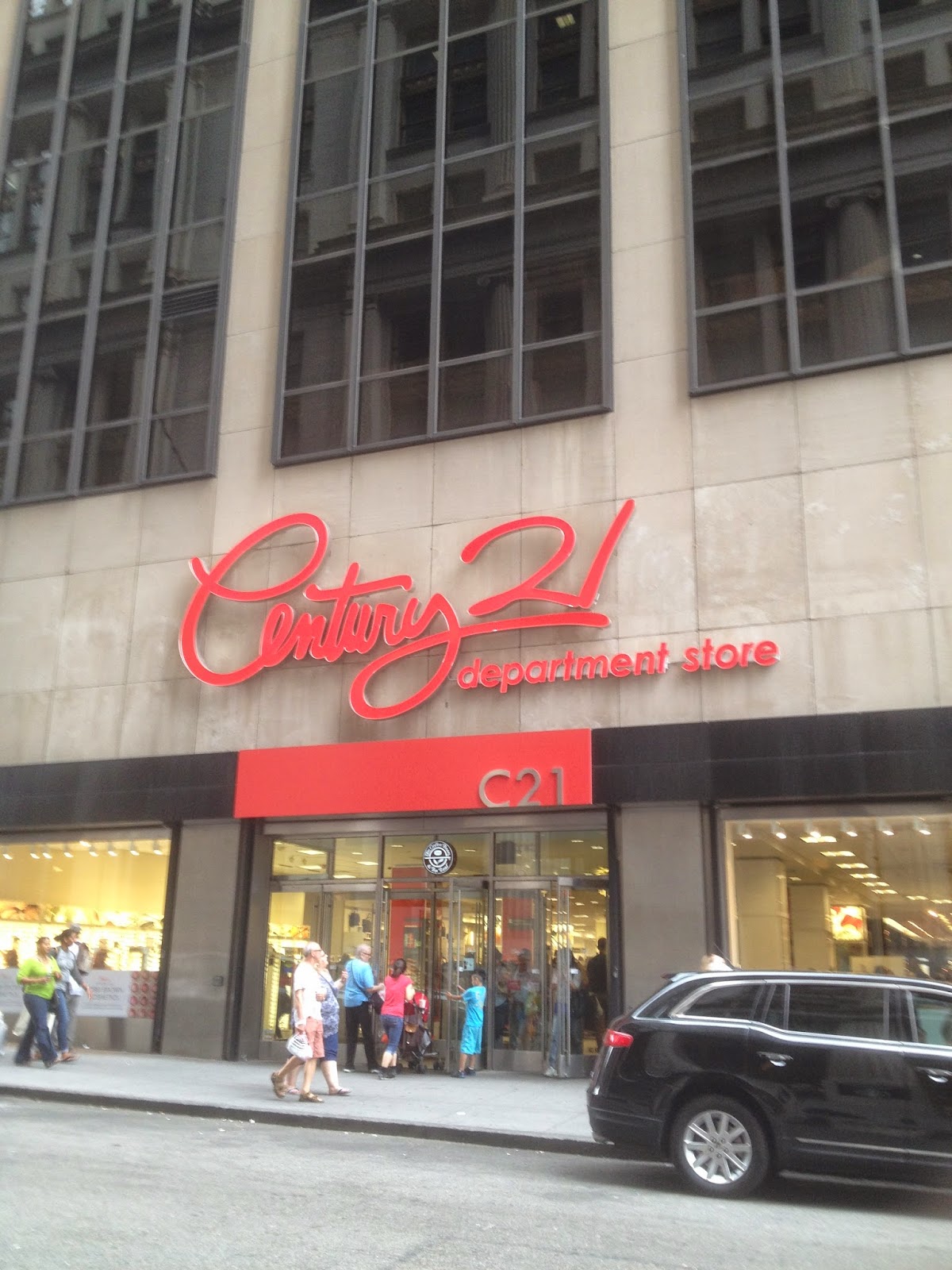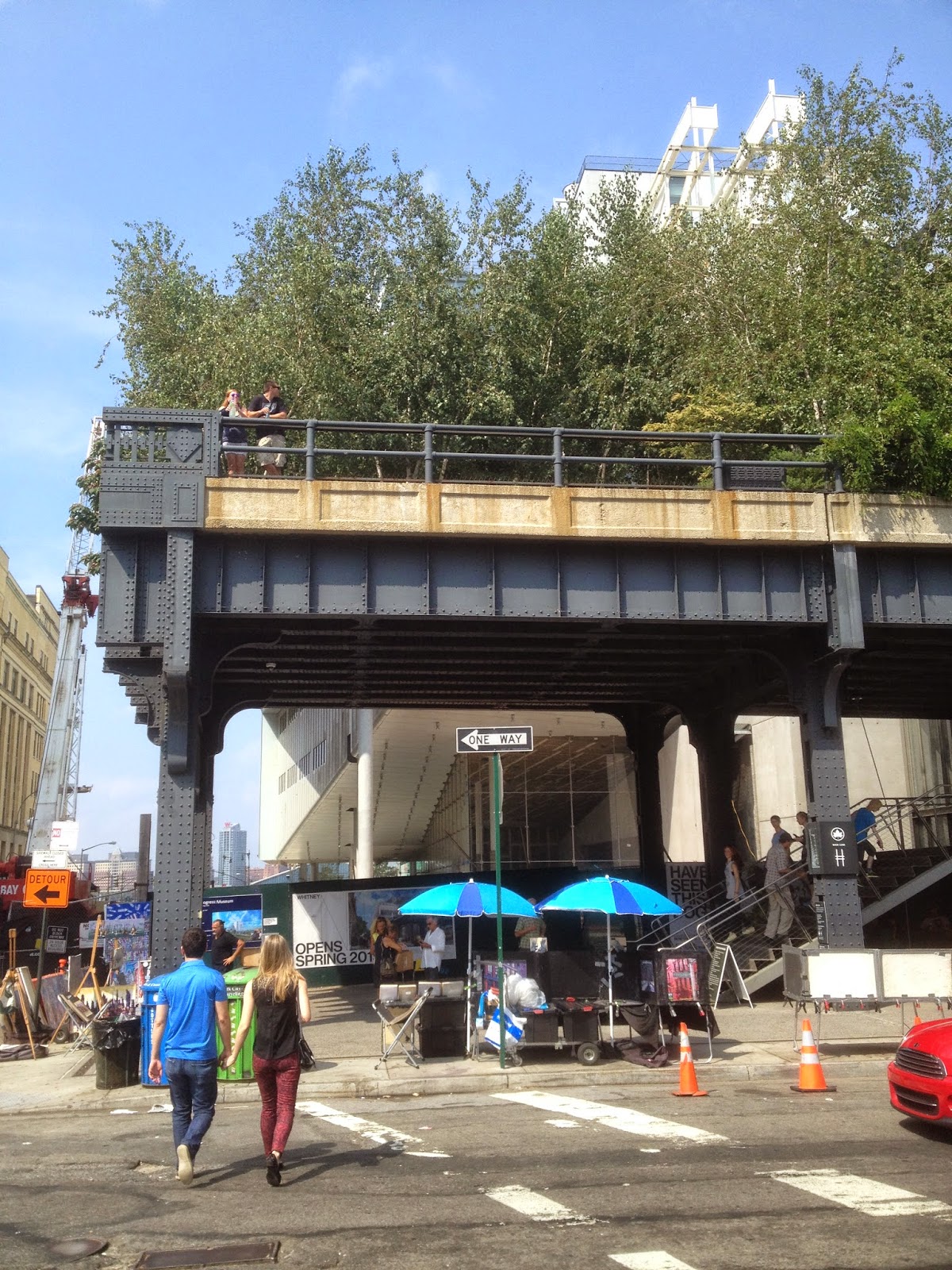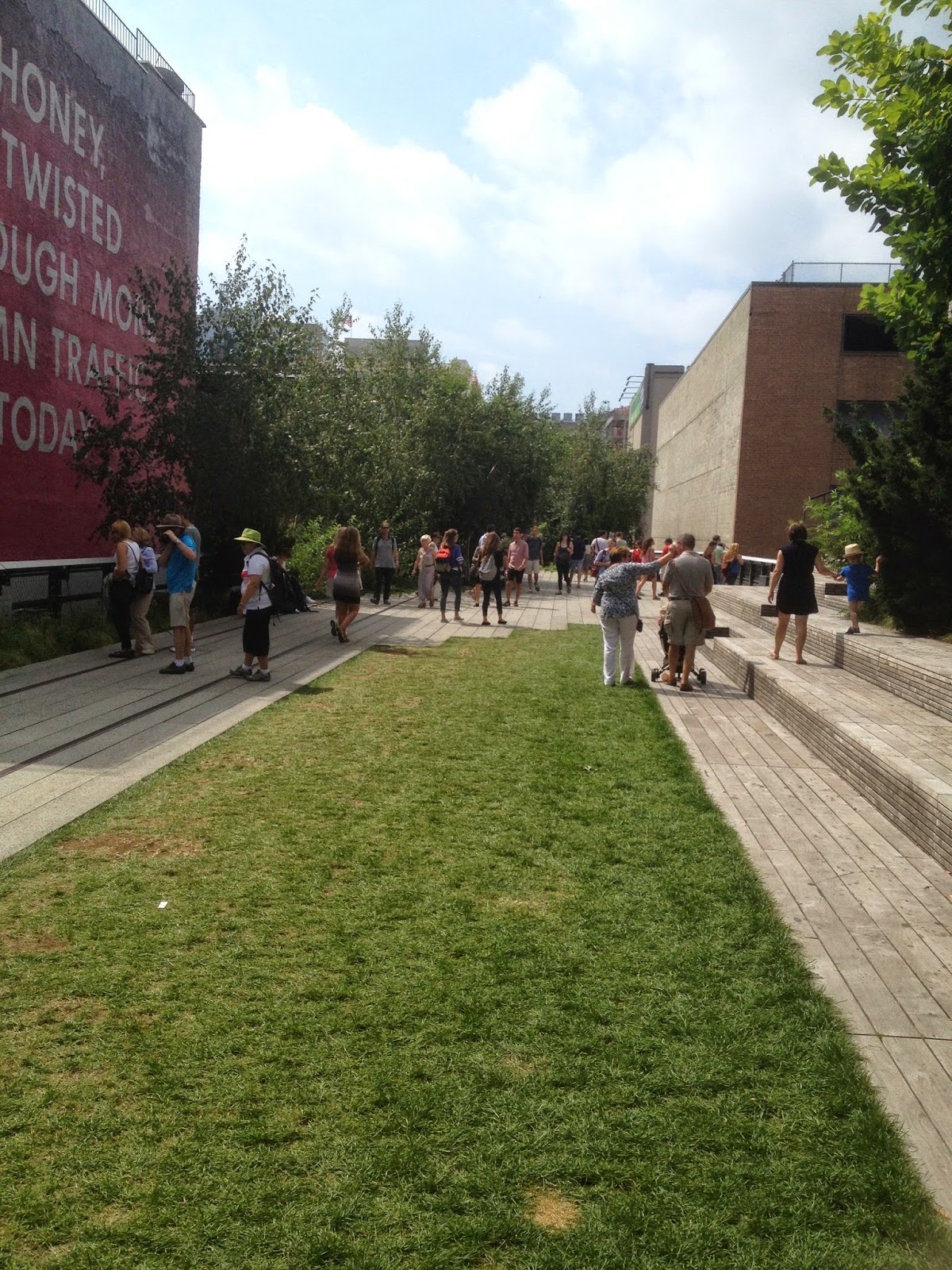Inna and I had used up all
our leave at work after two weeks in Britain back in August, so we decided to take advantage of the three day Labor Day weekend
and go visit Inna’s son Arthur in New York.
We got a good deal at the Holiday Inn Wall Street, near Arthur’s apartment, and we left Annapolis around eight on Saturday
morning. The trip was a breeze, like
doing a reverse commute, because everyone was heading south on I-95 toward the beach as we were heading north toward the city.

The Labor Day holiday is
hands down the best time to visit the Big Apple because many New Yorkers bail for
the Jersey Shore and the weather is still
warm, but not steamy hot – although we encountered unseasonably warm weather for the end of summer. And this time, through the wonder of Siri and Google maps, we
even discovered a new route into NYC that avoided the always crowded Holland Tunnel by taking us on a big end run around to the
south and into Manhattan via the Goethals Bridge from Jersey onto Staten Island,
and then the Verrazano Bridge across to Brooklyn, and then the Hugh Carey Tunnel over to Ground Zero – literally – right near the 9/11
Memorial.


America’s greatest modern
day tragedy has become big business and tourists flock from all around the
world as if on pilgrimage to see the 9/11 Memorial and Freedom Towers which are rising into the sky like silver blue
wavy columns of steel and glass. The recently completed first tower reminded me of a shiny stiletto. And it is definitely more attractive than what was there before.
Two things struck me as a
bit odd about New York’s
Ground Zero area.
The first is just kind of
goofy. In order to achieve the previous super
height of the Twin
Towers that were
destroyed by the exploding jets, they have built a stunning structure with its
head in the clouds. But the building
sports a giant white tower on top that looks like an antennae hat, and which
gets them what looks to be another couple of hundred feet. Using this same architectural principle, you could put a 5,000-foot tower
on top of a house and then call it the tallest building in the world. That would certainly save a lot of time and
money.

Speaking of structural hats, did you
know that the wooden water tanks atop many New York skyscrapers are no longer
functional and are just there for show, like pointy tin party hats crowning
each roof? These days, most buildings are hooked
into public water and no longer need to catch rooftop rain that can be gravity-fed
to the tenants. I think it’s kind of
neat that they didn’t remove these rusty artifacts and allow them to serve as a visual reminder
of times long past – some are even being turned into works of art.
The second thing I noticed
was incredibly ironic. And
those were the many Arabs – especially women in head scarves and scowling men wearing Yankees baseball caps – aggressively
hawking 9/11 Memorial souvenirs and books all around the 9/11 Memorial. I’m sorry if that sounds racist, or
politically incorrect, but the whole scene just rubbed me the wrong way.
Inna and I have been traveling a lot lately and we were recently in London where there is a
building boom going on that is truly quite impressive. And there are a lot of sky cranes and new
buildings going up all over Lower Manhattan. But there is also a helluva lot of
infrastructure work underway too – roads, waters pipes, electric lines, and buildings
getting face lifts. Everywhere we walked it
seemed like something was being torn up and there were orange construction
fences, scaffolding, and gaping holes in the street on almost every block. It often reminded me of a Bomb Zone, like a big
city rebuilding after the war.

In the past, I always
visited New York City
in the winter, during the lull right after New Year’s, when the holiday season
is over, but the decorations are still up, and the tourist crunch takes a
little snow break. New York in January is brutally cold, and the cavernous walls
of buildings turn the shaded streets into freezing wind tunnels. But NYC in the summer is a completely
different proposition. Eighty degrees feels
like ninety and the radiant heat coming off the towering stone buildings
reminded me of my days hiking in the Grand Canyon.
Which brings me to the
smell. Now, I love New York City, no matter the season. There is no place on earth like it. It is an endless assault on the senses. But that isn’t always a good thing. And in the summer, the smell around New York City is
horrific. It is the smell of rotten
garbage and urine, and it takes a while to get used to it.
NYC produces an almost
unimaginable amount of garbage every single day, and at night, all of the businesses and residents pile their overflowing
trash bags along the curbs, creating plastic bag mountains of oozing waste. And to its credit, the city has their crews
out there first thing every morning picking up the garbage. But it still gets pretty nasty when it's warm.
I was out walking at six in
the morning on Labor Day, and the only people afoot were the garbage men and
cops. But they can’t get up early enough
to beat the rats that come out of their underground haunts at night and voraciously
attack the garbage piles. It’s not
uncommon to see twenty or more come scurrying out of a pile of trash sitting at
the corner of a busy street. And while
it probably isn’t dangerous – I mean, the rats don’t attack you, or anything
like that – it’s still creepy as hell.
Dimly lit stairwells literally teem with the creeping little demons at
night.
I have no idea how the city
might solve this pesky problem. Putting
all of the trash in dumpsters wouldn’t stop the rats.
And poison always causes collateral damage, starting with the
neighborhood dogs and cats. So, New
Yorkers have just gotten used to the whole smelly scene, like pig farmers who
don’t even notice the overpowering smell on their farms.
But the one thing they might
try to do is to wash the streets a little more often. Many large
cities in Europe hose down their downtown streets on a daily basis – in Barcelona, they actually
steam clean the streets – and the Big Apple is in dire need of a serious
cleaning from head to toe.



New York City
has always been home to a lot of homeless people.
Times Square used to teem with them before Mayor Giuliani and the Times Square Church teamed up to rid themselves
of the human plague. But as often
happens with a serious societal problem like homelessness, when you
shut down an area where the homeless gather in large numbers, they just move
somewhere else a bit more out of sight and out of mind. So, you will encounter a raggedy person sitting on
the filthy concrete, leaning against a building with a change cup and a hand-lettered cardboard
sign, asking for help, on virtually every side street in Lower Manhattan – EVERY street. As a general rule, they do not ever say anything; they just sit there
quietly like sad dummies, hoping for a handout. Many lie
sprawled on the ground in postures resembling death.
It is a terrible sight to behold! And we should all
be ashamed that in a country so rich, and one that can afford the luxury of
billion dollars a day military fiascoes, we can not care for the wretched and
hopeless among us.



Okay, enough about the bad stuff in NYC.
Because the good far outweighs the bad.






I hadn’t been to the Museum
of Modern Art since their
major renovations about five years ago. So we took Arthur and his girlfriend Tiala to
see the world’s most amazing art gallery. Sure, there are many art museums around the
globe in much more attractive buildings than MOMA’s rather non-descript
six-floor block of glass and steel, starting with New York’s Metropolitan of
Art, the Louvre in Paris, the Tate in London, or pretty much every gallery
in Vienna and Prague – but it’s what’s inside that counts, and no other modern
art gallery even begins to rival MOMA.
This isn’t my personal bias; it’s a fact, Jack. Of the world’s most critically acclaimed,
touchstone top fifty paintings of modern time, MOMA houses about forty of them
– from Dali’s “The Persistence of
Memory” with its melting clocks, to Van Gogh’s “Starry Night”, to Monet’s
wall-sized “Water Lilies” and Jackson Pollock’s “Number 31”, to Matisse’s “The
Red Studio”, to Rousseau’s “The Dream”, to Warhol’s “Campbell’s Soup Cans”, and
a take your pick assortment of Picasso, Magritte, Chagall, Ernst, Chirico, and Joan Miró – the modern art icon
paintings are all there. It is both reassuring
and surreal at the same time – reassuring in that all of these magnificent
treasures will always be there in this one spot for all the world to see, and
surreal in the sense that all of these magnificent treasures are there in one
spot.
Every time I go to MOMA, I hear
someone say, “I saw that painting in Chicago last year,” pointing to “Starry Night”
or Andrew Wyeth’s “Christina's World”. Or you
will hear someone ask, in vague disbelief, “Is that the original?”
Oh yeah. The one and only.
One of New York’s newest— and slightly hidden
– gems is the High Line, a 1-mile-long linear park in Lower
Manhattan that follows the abandoned West Side Rail Line that once
serviced the Meatpacking District. It’s
an aerial greenway, fashioned after the Promenade plantée in Paris, offering spectacular views of Chelsea
below and the Empire
State Building
to the north.
Work on the trail began in
2006, and phase one opened in 2009, phase two in 2012, and phase three will be
completed in late 2014. The southern
terminus starts at Gansevoort
Street (3 blocks below 14th). The old rail line hangs there in the air as
if cleaved by a giant axe.



We arrived at the High Line
a little after ten on a Sunday morning and things were already hopping. Tourists and locals crowded the meandering
stone path, and we immediately found ourselves within a white birch forest that
framed the trail just like the real thing. The
trees soon gave way to manicured flower beds in full bloom, interesting sculptures, and stylish wooden
benches lining the grass-divided trail. At each cross street there were
overlooks, and stairways down to the street; and some even sported wooden
bleachers where artists performed free impromptu shows to the delight of the
passersby. There were vendors selling
coffee, ice cream, sandwiches, and art works, and it had the look and feel of a
European promenade – in the air. It took
us about an hour to walk the whole trail that ends at 30th Street, where a luxury apartment
complex abruptly turns it away. As with
all trails, the High Line has been great for the local businesses and has led
to much-needed reinvestment in the adjacent housing market. Living next to the High Line is now
considered hip and groovy.
And the next day, Inna and I stumbled onto a similar – although much shorter – aerial platform down at the South Street Seaport,
complete with free chaise lounges overlooking the East River and several historic sailing ships.
South Street Seaport is the oldest part of NYC (1620's) and it looks just like
Fell's Point in Baltimore, down to the cobbled streets, red brick waterfront
warehouse architecture, and funky restaurants and bars. We had a yummy lunch at the Paris Cafe, which was built in 1873, but almost wiped out by Hurricane Sandy. Owning a business on the New York City waterfront these days is at best a crap shoot with climate change and sea level rise.
New York is constantly reinventing itself. And that is a good thing. It used to be the world's melting pot, but now it's more like the world's biggest cultural blender that is always turned on high. It swirls together with an ever-changing mix of colorful and shiny objects. And if you can get beyond the sour smell, it is very refreshing and really tastes great.









































